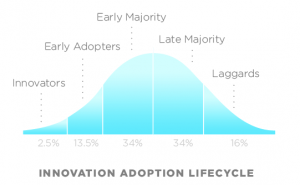Step 3 – Identifying a Guiding Coalition
- On 03-08-2016
In Designing Middle Leader Vision Statements and Designing a Case for Action Narrative we explored the first two elements of how middle leaders can plan to lead their team effectively. The next step is to identify and enrol a guiding coalition of people from your team.
One of the key aspects of a middle leader’s role is to be the person ensuring that the goals and values enshrined in the school’s strategic plan are implemented with their team. If you lead a curriculum team this means leading the enactment of curriculum and pedagogical practice, documentation and teacher development. If you lead a well-being or pastoral team then this means leading the enactment of well-being practices, systems and processes.
As Kotter points out in his writing,
“No one person, no matter how competent, is capable of single-handedly:
- developing the right vision,
- communicating it to vast numbers of people,
- eliminating all of the key obstacles,
- generating short term wins,
- leading and managing dozens of change projects, and
- anchoring new approaches deep in an organization’s culture. “
Constructing the right team and then combining a level of trust with a shared goal in which the team believes can result in a guiding coalition that has the capacity to make needed change happen despite all of the forces of inertia. Schools are constantly in the midst of change and middle leaders, most often, are the ones leading the change with their teams.
Creating the Guiding Coalition as a Middle Leader
Kotter suggests that there are 4 qualities in effective guiding coalitions
- Position Power – enough key players on board so that those left out cannot block progress
- Expertise – all relevant points of view should be represented for informed decision making
- Credibility – seen and respected by those in the school
- Leadership – show leadership in your team
Given that the size of the teams that middle leaders lead in school is quite small, and you often do not have a choice of who is in your team, I would suggest a simpler approach that is aligned with Kotter’s thinking.
Who you want in your team to be the forefront of enacting change are the innovators and early adopters. Whilst middle leaders should definitely continue to nudge and support the remaining team members to enact the required change, it will be the innovators and early adopters who should lead the way.
This small coalition of people should have a pilot action-evaluation project where they become the first to trial new ideas and approaches so they can build up the team’s knowledge of the change and the credibility of what is being trialled. They would find what works and what doesn’t work in the environment of the school first. They would collect data, evidence and stories of what made the difference and what pitfalls to avoid. Essentially they would beat the path so that the remainder of the team can follow quickly.
Why having a small pilot team that attempts to enact the change first is so important is that individuals who are in the early or late majority for enacting change often need a lot of evidence that the change will work with “our students in our school and with our subjects”. Part of the issue, as a Harvard report discovered when exploring what made particular high schools exemplary as they enacted change, was that resistance to change was based on six fears:
- Fear of wasting time and energy
- Fear of losing autonomy
- Fear of experiencing incompetence when trying new things
- Fear of becoming socially isolated
- Fear of unpleasant surprises
- Fear of more work
The small pilot team of innovators and early adopters aren’t necessarily as held back by these fears and can produce a professional learning environment that minimises these fears for the remainder of the team. They tend to be driven by a vision and the joy of innovating and experimenting.
Steps to Take
The first step to creating a guiding coalition is to assess the strengths and areas for development of the members for your team. The assessment is not about assessing whether someone is good or bad but making some broad notes of each person’s strengths, expertise, leadership, credibility to others, and where you would put them on the innovation cycle for the change being enacted. You should also jot down what could be possible areas of development or growth for the person.
With the intent of building transparency and trust you should also ask the individuals in your team to assess themselves. It is worth making it crystal clear that what will be captured will be used solely in a developmental coaching way and not as a weapon against them. For low trust situations you might have one-on-one conversations where you and the individual team member do the assessment together. In mid-level trust teams you might do this at a team session. In high trust teams you could run the assessment in a 360 degree format where everyone honestly provides feedback.
| Person | Strengths | Possible Areas of Development / Growth |
|
|
||
|
|
||
|
|
||
|
|
||
|
|
||
|
|
References
- Leading Change, John P. Kotter, Harvard (2012)
- How High Schools Become Exemplary: ways that leadership raises achievement and narrows gaps by improving instruction in 15 public high schools, AGI Conference Report, Harvard Graduate School of Education (2009)
- Extraordinary Leadership in Australia & New Zealand: The five practices that create great workplaces, James Kouzes and Barry Posner with Michael Bunting, Wiley (2014)
- Hardwired Humans: Successful Leadership Using Human Instincts, Andrew O’Keeffe, Roundtable Press (2012)

0 Comments